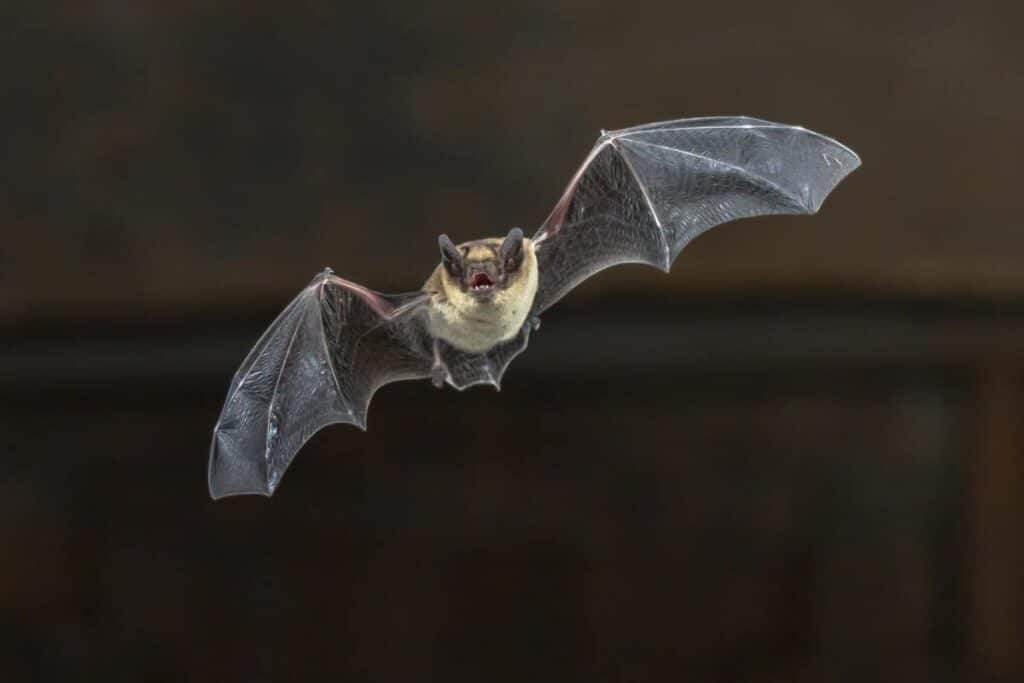A Caerphilly-based builder has received a 12-month conditional discharge and ordered to pay costs of £111 – roughly equivalent to a day’s pay for someone on the average UK wage – for illegally removing a roof at a property and destroying THREE separate bat roosts where protected Common Pipistrelles, Soprano Pipistrelles, and Whiskered Bats were known to be roosting.
Robert Roberts failed to apply for a European Protected Species License from Natural Resources Wales (NRW) before removing the roof and failed to put appropriate mitigation in place. He pleaded guilty to breaching the Conservation of Habitats and Species Regulations 2017 (as amended) at Newport Magistrates Court on 25 March 2024.
In court, Roberts argued that a breakdown in communication between himself and the house owner had resulted in the roof removal taking place too early.
Assuming expertise to properly assess what harm was caused, Roberts further argued that despite removing the entire roof the bats had now returned and that – to his (we’re assuming) untrained eye – the bats had not been harmed.
However, giving his more expert opinion, PC Mark Powell on secondment with Natural Resources Wales Industry Regulation team said:
“Officers from NRW are successfully working with police forces across Wales, and the National Wildlife Crime Unit to investigate and prosecute those responsible for committing wildlife and rural crime offences.
“The ecologists that compiled the original survey at the address confirmed that there were three separate roosts present and two of those roosts, they allege, were maternity roosts.
“This destruction of confirmed Bat Roosts without ecological onsite support and without the European Protected Species Licence, is shocking.
“The loss of two maternity roosts is simply devastating and whilst it is fortunate that bats have returned to the address, the potential loss of a full years’ breeding cycle may have impacted the species in the local area.”
Penalties not always so trivial
It’s difficult to imagine how this trivial and inadequate fine can be justified.
While still inadequate, in January this year the Director of Your Space Projects Limited pleaded guilty to breaching the Conservation of Habitats and Species Regulations 2017 for illegally destroying a building in Newport where Common Pipistrelles (one of the same species as in this case) were roosting and the Company was fined £2605 – nearly 24 x the ludicrous ‘lunch money’ fine handed to Roberts. The company again argued that a ‘breakdown of communication’ was the cause.
Large fines are sometimes given out though. In 2020 Bellway Homes were fined £600,000 and ordered to pay £31,000 costs after knowingly demolishing the roost of Soprano Pipistrelles (again, one of the species involved in the Roberts’ case) in Greenwich, south-east London in 2018. Police said it was the largest ever fine issued by a court for a wildlife crime.

In decline
All of the UK’s seventeen breeding bat species are considered priority species in the UK and Europe and all are protected by both UK and European Wildlife law. It is illegal to “intentionally or recklessly disturb a bat in their roost or deliberately disturb a group of bats”.
UK bat populations have crashed due to human activities including habitat change, huge declines in the availability of their insect food, and destruction of roosts. Every bat is precious!
Bat crime figures for 2022 (the latest currently available) increased by 23% compared to 2021. A survey issued by the National Wildlife Crime Unit to the 43 police forces across England and Wales (19 forces responded meaning these numbers are likely far less than the true extent of crime), coupled with reports to Bat Conservation Trust revealed 164 cases of bat crime. Note that a ‘case’ is just the reported incident, not the number of individual bats affected.
The most common form of bat crime is disturbance or destruction of roosts, often – as in this case – due to property development. But the almost incidental destruction of bat habitat – which includes not just roosting and breeding sites but the open fields, hedges or rivers they use while searching for insects – is far more problematic.
The UK has been ‘promised’ a decade of infrastructure development and massive house-building projects which mean huge losses for wildlife including bats. Projects like HS2, for example, was (before being partially shelved in late 2023) designed around the destruction of 5 internationally designated wildlife sites; 33 Sites of Special Scientific Interest; 21 Local Nature Reserves; 693 Local Wildlife Sites; 4 Nature Improvement areas; 22 Living Landscapes and 18 Wildlife Trust Nature Reserves.
Ecologists monitoring this destruction have recorded many examples of bat roosts being destroyed ‘under licence’ and have lambasted mitigation efforts as totally inadequate.
Does it matter?
As we don’t really notice bats, losing them might not seem all that important, but it most certainly does matter.
Leaving aside arguments about whether bats have the same right to exist as we do, many bats are ‘indicator species’. Declines in bat populations mirror declines in the health of our environment. Like nocturnal ‘canaries in the coal mine’ the loss of bats tells us about the loss of insects (which are crucial to food chains that involve not just bats but birds, fish, and other insects), the loss of connected landscapes, and a gradual breaking of the natural processes that we all depend on. Whether we care very much or not about bats themselves (and we at Protect the Wild care very much), we need them.
Legal protection for bats is of course important (and would mean far more if properly enforced and crimes adequately punished), but if we want to save bats (and so much more else) we need to think on a far, far bigger scale.
- Header image Shutterstock

